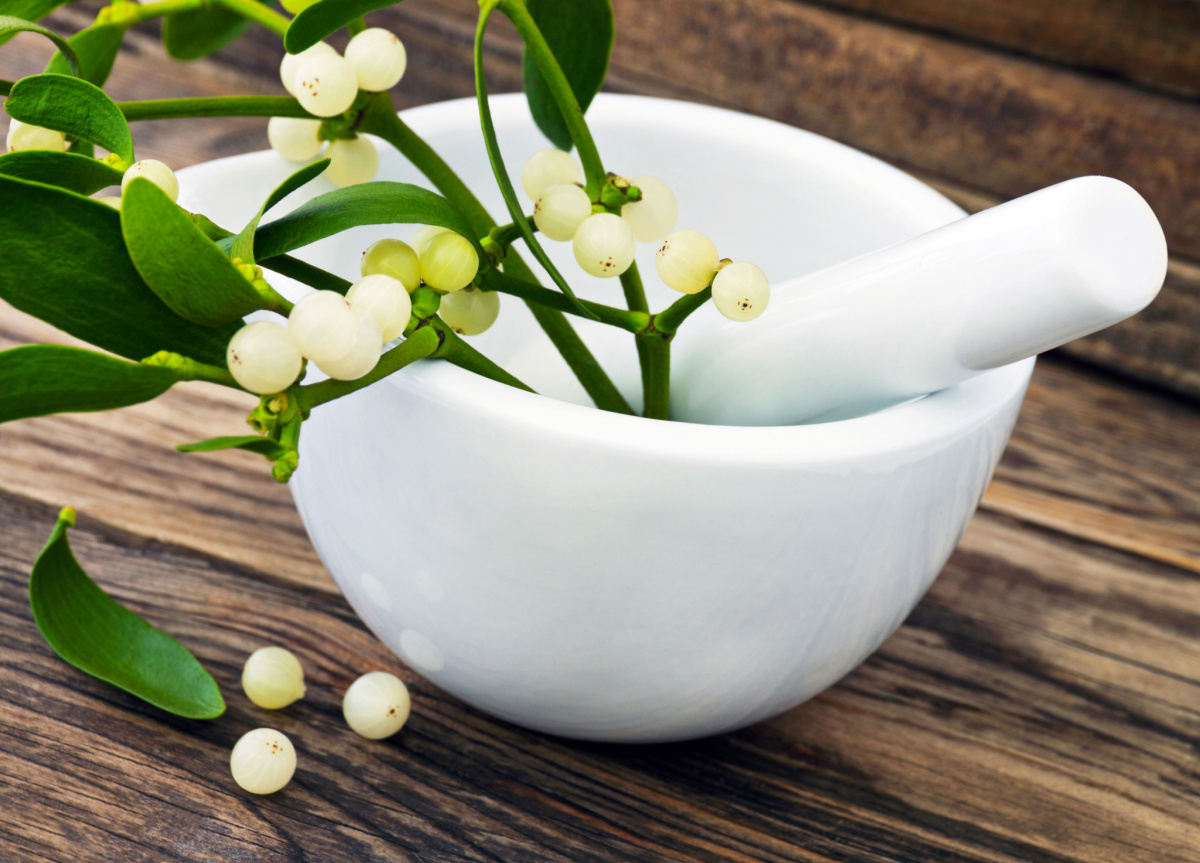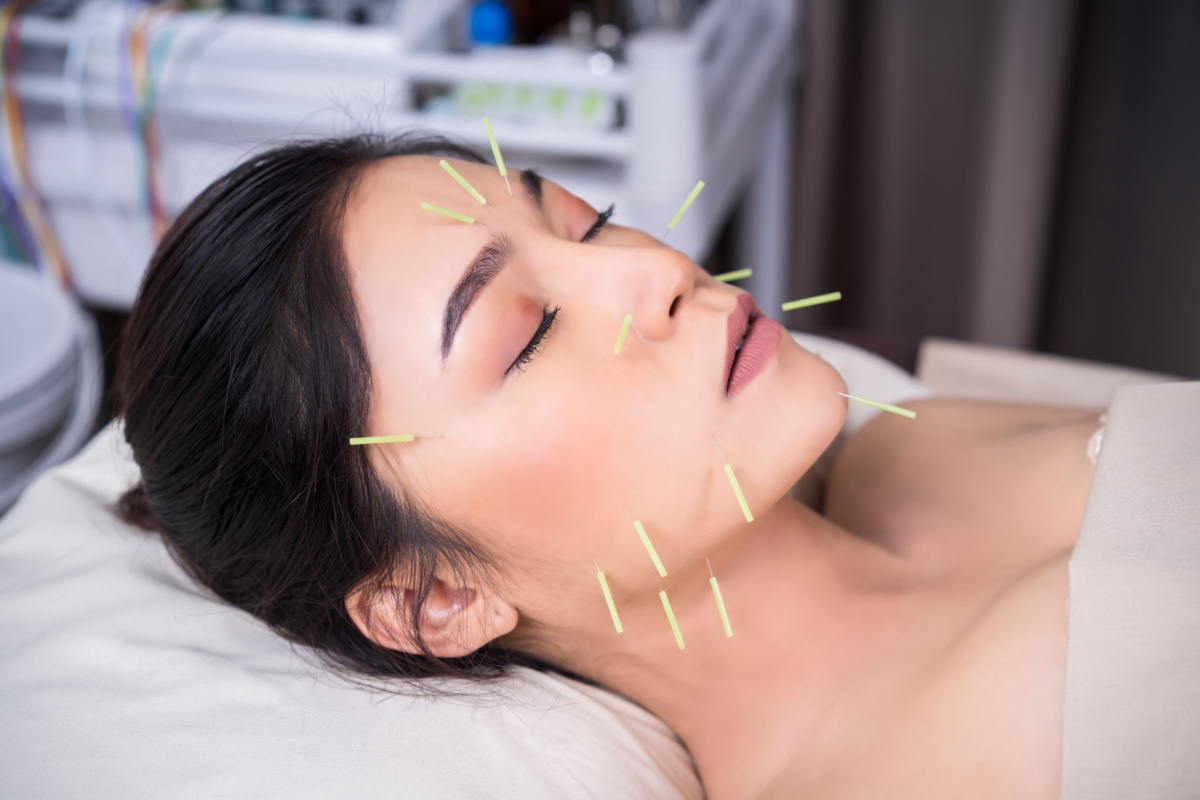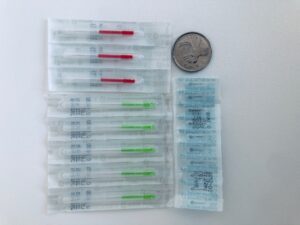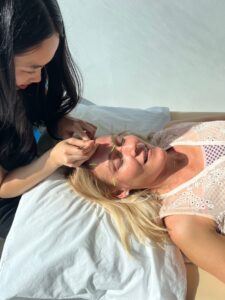Mistletoe Therapy
Mistletoe therapy has been used in cancer care since 1917 and is now among the most prescribed adjunctive cancer therapy in Europe for patients with cancer.
Mistletoe therapy can improve quality of life by lessening side effects such as fatigue, nausea/vomiting, low appetite, low energy, and pain associated with cancer treatments such as chemotherapy and/or radiation while simultaneously protecting healthy cells from damage. It has also been shown to improve overall survival in cancer patients.
How Does It Work?
Mistletoe extract contains lectins and viscotoxins that stimulates key cancer fighting immune cells such as NK cells and cytotoxic T-cells to improve our bodies defense against cancer. Cell studies have showed the ability of mistletoe extracts to directly target cancer cells through apoptosis which helps to supress tumor growth and spread.
Mistletoe extracts also contain flavonoids and triterpenoids which protect healthy cells from damage caused by excess radiation/drugs through their antioxidant and anti-inflammatory action.
Is There Scientific Research To Support Mistletoe Therapy For Cancer?
Studies on the use of mistletoe therapy in cancer are ongoing, such as at Johns Hopkins Medicine in the USA. There are also more than 3000 publications and 150 clinical studies have been done on mistletoe thus far.
A summary of current findings:
- Improvement in quality of life (reduces fatigue and pain; improves energy, mood, and sleep quality)
- Improvement in overall survival
- Safe to use alongside conventional therapies studied
- Strong immunomodulatory effects (increases immune function, decreases tumor growth)
Breast cancer: In patients with breast cancer undergoing surgery and chemotherapy, mistletoe extract had no adverse interactions alongside chemotherapy and improved overall pain, appetite loss and neutropenia (decreased white blood cell count) as well as perceived quality of life.
As compared to breast cancer patients who received standard of care only, the administration of mistletoe was found to decrease adverse reactions (nausea, diarrhea, depression, fatigue, and mental symptoms) associated with standard of care cancer therapies such as chemotherapy, radiation, and hormone therapy.
Pancreatic cancer: In patients with locally advanced or metastatic pancreatic cancer who received no further treatment for pancreatic cancer other than supportive care, administration of mistletoe extract was associated with improved pain, fatigue, appetite loss, sleep quality, body weight, and prolonged overall survival. No mistletoe-related adverse events were observed.
Colorectal and stomach cancer: In patients with carcinoma of the colon, rectum and stomach, long term use of mistletoe extract was found to prolong survival time.
Lung cancer: In patients with non-small cell lung cancer (NSCLC) who were provided with standard of care conventional treatments, quality of life was significantly improved for patients who were treated with concurrent mistletoe extract treatment.
In addition, the occurrence of adverse events associated with standard of care treatments were less frequent in the mistletoe treatment group.
How Is It Administered?
You can find many different ways to give mistletoe extracts, but it is most often given as an injection. Less common methods include orally or through an IV Therapy drip.
Mistletoe is most often injected under the skin (subcutaneously) on the abdomen or thigh 2-3 times a week, starting from a low dose and working up towards higher doses to continually stimulate immunity and provide quality of life benefits. Mistletoe therapy is a long-term treatment.
After careful screening of patient history and current health status, we will determine the type of mistletoe therapy best suited for you.
We will then familiarize you with the treatment, demonstrate how to self-administer mistletoe, and provide you will all the supplies needed to continue the therapy independently at home.
Is It Safe?
Mistletoe therapy has an excellent safety profile. It can be safely used during chemotherapy and/or radiation to enhance treatment outcomes and increase treatment tolerability.
It can also be used after curative treatment, or in palliative therapy to improve quality of life, stabilize disease, and reduce progression or recurrence. In general, mistletoe therapy is well tolerated in adults and has little side effects or negative interactions with other therapies.
Mistletoe therapy is not recommended for individuals with multiple sclerosis, lupus or uncontrolled hyperthyroidism with tachycardia due to its immune stimulating effects and potential for aggravating symptoms.
Does It Have Any Side Effects?
There are desired local reactions to mistletoe therapy that is caused by infiltration of activated immune cells. This reaction indicates to the practitioner that it is positively stimulating anti-cancer immunity and can help to determine the maximum dose for the patient at a given time. Desired effects:
- Temporary localized redness < 5 cm in diameter and minor swelling and itching of the skin
- Temporary elevation in body temperature
- Improvement in general condition
- Improved tolerability of chemotherapy and/or radiation
- Long term: stabilization of disease progression
An anaphylactic allergic reaction to mistletoe extract is rare. It is important to let your health practitioner know of any pre-existing allergies before initiating mistletoe therapy.
How Much Does It Cost?
$20-25 per treatment (2-3 treatments per week) per injection. If you were to use IV Therapy for mistletoe therapy, prices can range from $125 and up.
There are also oral supplements with mistletoe extract on the market. These range in quality and it would be suggested to talk to a professional about the brand before ordering online.
How Do I Start Therapy?
If you want to take full advantage of mistletoe therapy, make sure that it’s part of your overall health plan. This means you could also add IV therapy and would want to look at the foods you are eating.
Before initiating mistletoe therapy, an initial consultation is required for a comprehensive assessment of your health history and current health status. This consultation will also help to determine the type of mistletoe extract and treatment plan best suited for you.
Following the initial visit, a shorter consultation is required to familiarize you with the treatment, demonstrate how to self-administer mistletoe, and provide you will all the supplies needed to continue the therapy independently at home.
Follow-up visits are scheduled to monitor tolerance and response to treatment as well as if there are any changes to your conventional treatment which may require modification of mistletoe therapy.
Naturopathic medicine is a great option for those who are looking to supplement their conventional cancer treatment with something that will help them feel better, not just during the process of fighting it but also after surgery or chemotherapy.
If you want to find out more about mistletoe therapy, you can book a free 15 minute call with Dr. Irina Chan, ND by clicking here.
References:
https://pubmed.ncbi.nlm.nih.gov/25142075/
https://pubmed.ncbi.nlm.nih.gov/23890767/
https://pubmed.ncbi.nlm.nih.gov/11347286/
https://pubmed.ncbi.nlm.nih.gov/30247950/
https://pubmed.ncbi.nlm.nih.gov/15015612/
https://pubmed.ncbi.nlm.nih.gov/14981970/




